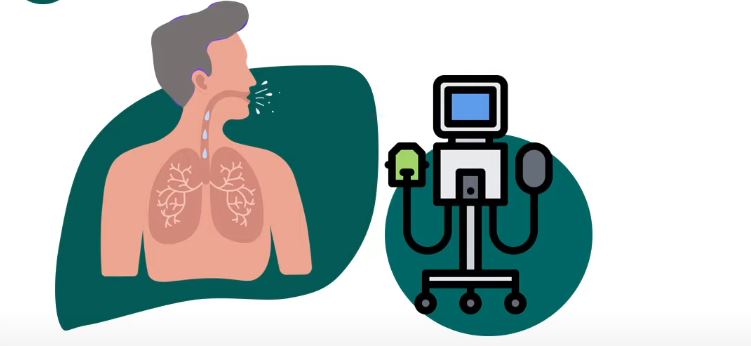
Few could have predicted the enduring impact of Lou Gehrig’s words—or the illness that would bear his name forever—when he took the field at Yankee Stadium in 1939 to give his famous farewell speech. ALS has drawn the attention of medical professionals, researchers, and activists in recent decades, spurring efforts to unravel one of the most devastating mysteries in neurology.
Lou Gehrig’s illness is now more than just a medical diagnosis. It symbolizes a never-ending struggle for breath, speech, and mobility as well as a worldwide movement toward knowledge, creativity, and, eventually, hope.
| Aspect | Details |
|---|---|
| Condition Name | Amyotrophic Lateral Sclerosis (ALS), or Lou Gehrig’s Disease |
| Origin of Name | Named after baseball legend Lou Gehrig |
| Primary Impact | Progressive loss of muscle control |
| First Symptoms | Muscle twitching, speech difficulty, weakness |
| Causes | Mostly unknown; 10% genetic |
| New Cases Annually | About 5,000 in the U.S. |
| Average Survival | 3–5 years post-diagnosis |
| Learn More | Mayo Clinic: ALS Overview |
Knowing the Mechanisms: When Neurons Quit Talking
Neurons are incredibly effective messengers in the field of human biology; they speed along networks and convey commands that allow us to speak, walk, and smile. ALS gradually silences the body’s voluntary muscles by destroying these essential communication channels.
Consider the gradual loss of wiring in a city’s main power grid, which would first flicker before going out completely.
Amazingly, although the illness weakens the body, it typically does not affect the senses of sight or hearing, resulting in a stark contrast between a lively mind and a body that becomes less responsive.
Advances in genetic research and imaging over the last ten years have greatly enhanced early diagnosis, providing patients with a critical window for treatment planning and lifestyle modifications.
Signs That Roar After Whispering
ALS frequently manifests as barely perceptible tremors, slight slurred speech, or small trips. Lou Gehrig’s disease often presents with early symptoms that are remarkably similar to normal fatigue or clumsiness, delaying diagnosis.
Common early indicators include:
- Muscle twitching (hands, feet, tongue)
- Weakness in limbs or grip
- Difficulty swallowing or speaking
- Unexplained fatigue or cramps
- Increased emotional responses, such as spontaneous crying or laughing
Managing ALS: A New Era of Progress
Though no cure currently exists, management of Lou Gehrig’s disease has notably improved in recent years, offering patients extended quality of life and precious time.
Key FDA-approved treatments include:
- Riluzole: Helps prolong survival by several months.
- Edaravone: Slows the decline of daily function.
- Sodium phenylbutyrate/taurursodiol: A newer, promising option.
- Tofersen: Targets specific genetic mutations.
By integrating therapies like physical therapy, occupational training, and speech coaching, patients can remarkably maintain independence far longer than in decades past.
Nature, Nurture, or Both: The Mysteries of Cause?
Researchers refer to the 90% of cases of ALS that occur without a known genetic cause as “sporadic ALS.” The remaining 10% have familial ALS, which is inherited and brought on by gene mutations like SOD1 or C9orf72.
In contemporary neurology, researchers are investigating a complex interplay between genetics and environmental exposures, such as heavy metals and viral infections, that could potentially trigger the illness in the correct circumstances.
Significantly, veterans of the armed forces are statistically more likely to be affected, which raises the possibility that trauma, excessive exertion, and environmental pollutants are all at play.
In the upcoming years, research teams aim to develop highly individualized, targeted interventions by examining these overlapping factors.
Lou Gehrig’s Lasting Influence
The spirit of ALS warriors may be the most remarkable feature of the disease, not lab results or trial outcomes.
Despite the fact that he would soon be paralyzed, Lou Gehrig proudly stood in front of thousands of people and called himself “the luckiest man on the face of the Earth.”
Generation after generation has carried on the torch that his bravery ignited.
The fight against ALS is becoming more and more intense every year thanks to innovative lab findings and viral campaigns like the Ice Bucket Challenge, which astonishingly raised over $200 million for ALS research.
Moving Forward: A Race Driven by Hope
It is anticipated that the convergence of genome sequencing, regenerative medicine, and AI-driven drug discovery will transform our understanding of neurodegenerative diseases like ALS in the years to come.
Humanity is getting closer to changing this death sentence into a treatable illness—or, eventually, curing it completely—with each new treatment trial, scientific discovery, and dollar raised.
